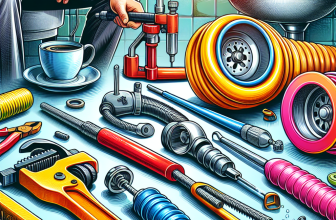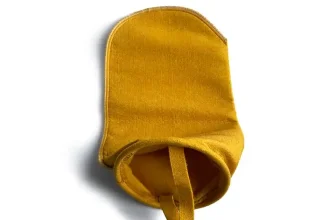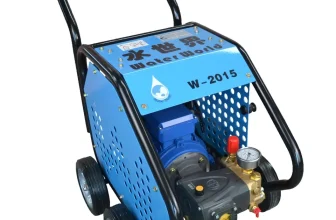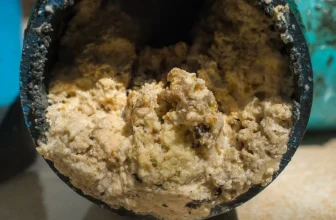Orangeburg Pipe is a type of pipe that was commonly used in residential plumbing systems from the 1950s to the 1970s. It is made from a combination of wood pulp and coal tar pitch and is designed to be strong, yet lightweight and easy to install.
Orangeburg pipe has been found to be susceptible to rot, corrosion, and damage due to age and environmental factors. As such, it has largely been replaced by modern PVC piping as an alternative material in plumbing applications.
Orangeburg Pipe History
Orangeburg Pipe was first developed in the 1950s as a cheaper alternative to cast iron piping. It was used in large scale projects and residential homes throughout the 1960s and 1970s due to its quick installation time and low cost. However, due to its tendency to degrade over time, it slowly fell out of favor during the late 1980s and early 1990s.
How Orangeburg Pipe is Constructed
Orangeburg pipes are first cut into lengths based on the specifications needed for each project. Once these pieces are cut, they are then glued together using an adhesive compound composed of tar-like materials such as asphalt or bitumen mixed with sawdust or wood chips.
The resulting joint creates a watertight seal which helps prevent leaks within the system. After gluing, additional layers of tar can be applied around these joints as further protection against corrosion caused by water exposure.
Orangeburg pipes can also be wrapped in insulation material such as fiberglass batting or foam rubber tubing prior to installation in order protect them from extreme temperatures and other environmental factors which could cause damage over time.
Benefits of Orangeburg Pipe
The main benefit of Orangeburg Pipe is its low cost compared to other pipe types. It is also lightweight and easy to transport, making it an ideal choice for large scale projects. Additionally, the installation process is relatively simple and can be done quickly.
Drawbacks of Orangeburg Pipe
The primary disadvantage of Orangeburg Pipe is that it has a tendency to degrade over time due to weathering and high temperatures. It is also prone to corrosion, which can lead to leaks or other damage. Orangeburg Pipe cannot handle extremely high water pressure and can be easily damaged by excessive force.
Signs that Orangeburg Pipe has Failed
If you have Orangeburg pipe here are some signs to look for that may indicate there is a pipe failure.
- Leaking water or sewage in the area of the pipe
- Unpleasant odors coming from the pipe
- Cracks or bulges in the pipe
- Low water pressure in connected fixtures
- Solids and sediment present in the water flow
- Discolored or muddy water
- Drainage taking longer than usual to clear out
Alternatives to Orangeburg Pipe
Alternatives to Orangeburg Pipe include PVC, CPVC, and ABS pipe. PVC is the most commonly used option and is often the most cost effective. It is also lightweight, durable and resistant to corrosion. CPVC is slightly more expensive but offers a higher temperature resistance than PVC. ABS pipe is the most expensive option but provides excellent durability and chemical resistance.
Methods Used to Replace Orangeburg Pipe
When Orangeburg pipe fails there are several methods that can be used to repair or replace the failed pipe. Some of the methods actually leave the failed pipe intact, which can save money and avoid the mess and hassle of tearing up lawns, concrete, asphalt, or whatever the pipe is running under.
Some of the most common methods of replacing Orangeburg pipe are:
- Pipe Bursting
- Close-Fit Liners
- Slip Lining/Cured in Place Pipe Lining (CIPP)
- Open Cut Replacement
We will take some time to go over these methods in a little more detail. There are just some of the methods available, so if you have failed Orangeburg pipe that needs to be repaired of replaced you should contact a plumber near you to find out what options are available in your area.
Pipe Bursting
Pipe bursting is a trenchless method used to replace Orangeburg pipe when it fails. This process involves pulling a bursting head through the existing pipe, breaking apart the existing Orangeburg pipe and replacing it with new HDPE pipe.
The technology of pipe bursting works by using a cone or bullet-shaped device that is pulled through an existing pipeline with cable or rods. As it passes through the pipeline, it breaks apart the old pipe while at the same time installing a new HDPE plastic liner in its place.
This method is effective at replacing pipes that are deteriorated or have been encroached upon by roots, but it can only be used effectively for pressurized lines.
Close-Fit Liners
Close-Fit Liners are used to replace Orangeburg pipe when it fails. This involves inserting an HDPE liner into the existing failed Orangeburg pipe then attaching the liner using special adhesive or thermal fusion techniques.
Close-Fit Liners are an effective method for repairing localized damages to pipelines and drains caused by corrosion, root intrusion, or structural failure.
The procedure of close-fit liners starts with an initial clearing of the failed pipeline, followed by a lining inspection process. A close-fit liner is then inserted into the existing pipeline and fused with either heat or special adhesives.
Once operational, Close-Fit liners provide additional protection against corrosion and reduce water loss due to leaks in the pipes.
This method offers a faster turnaround time than other methods of repair without disturbing the surrounding environment.
Slip Lining/Cured in Place Pipe Lining
Slip lining/Cured-in-Place Pipe Lining (CIPP) is a trenchless method used to repair and replace large diameter Orangeburg pipe. It involves inserting a new HDPE perforated liner into the existing failed pipeline, then using water or foam to expand the liner and fill any gaps between the liner and the original pipe walls.
This method can be used to repair pipes with localized damages, joint displacements, and minor cracks. Slip lining is effective at replacing the damaged portion of the pipe quickly and cost-effectively, to restore continued water flow.
Once set, the cured-in-place pipe lining creates a smooth interior surface that reduces friction loss, improves flow capacity and increases stability of the existing piping system. CIPP can also restore pressure ratings of pipes that have been weakened over time due to corrosion, root intrusion or other causes.
Open Cut Replacement
Open Cut Replacement is a traditional trenching method used to replace failed Orangeburg pipes. It involves excavating the existing pipe and replacing it with new HDPE pipe.
Open Cut Replacement is the best option when a pipe needs to be replaced due to large-scale structural failure or decay.
This method offers the highest level of protection against leaks, corrosion and root intrusion, but is labor intensive and disruptive to local environments due to the large-scale excavation involved. It is sometimes necessary for repairs that slip lining or close-fit liners cannot handle.
Open Cut Replacement should be considered as a last resort when Slip Lining/Cured-in-Place Pipe Lining or Close-Fit Liners are not applicable.
Conclusion
Orangeburg pipe can be difficult to repair or replace. There are a few methods available to address failed Orangeburg pipes such as slipping lining/cured-in-place pipe lining, close-fit liners and open cut replacement.
Depending on the damage of the Orangeburg pipe, one of these methods should work for you. Ultimately, it is best practice to regularly inspect your Orangeburg piping system so that any signs of failure can be addressed quickly and efficiently before they become too large an issue.
If you suspect there may be issues with your Orangeburg pipes, contact an expert immediately who will help determine which method works best for you in repairing or replacing them.
Frequently Asked Questions about Orangeburg Pipe
How Bad is Orangeburg Pipe?
Orangeburg Pipe is known to degrade over time, which can lead to serious problems such as water leaks and blockages. It has a tendency to corrode at an accelerated rate compared to other types of pipes, making it an unreliable choice for plumbing systems.
Is Orangeburg Pipe Still in Use Today?
Orangeburg Pipe is no longer used in new construction projects due to its tendency to degrade over time. It is still found in older homes and there are companies that specialize in the repair and replacement of Orangeburg pipes.
When Did They Stop Using Orangeburg Pipe?
Orangeburg Pipe was first used in the 1950s and was widely utilized throughout the 1960s and 1970s. However, due to its tendency to degrade over time, it slowly fell out of use during the late 1980s and early 1990s.
How to Identify Orangeburg Pipe?
Orangeburg Pipe can be identified by its color, which is usually a dark brown to black. It is also usually stamped with the letter O on the side or end of the pipe. Orangeburg Pipe also has a distinctive smell, which is often described as being similar to that of coal tar. It also tends to be soft and fibrous in texture compared to other pipes such as PVC.
How do I Cut Orangeburg Pipe?
Cutting Orangeburg Pipe is best done with a hand or power saw. To ensure a clean cut and minimize potential damage, it is important to use a sharp blade. It is recommended that the pipe be supported when being cut so as to reduce the risk of cracking or splitting.
How Much Does it Cost to Replace Orangeburg Pipe?
The cost to replace Orangeburg Pipe will vary depending on the type of pipe being used, the size and length of the pipe, and labor costs. Generally, replacing Orangeburg Pipe can range from $20 to $50 per foot for simple installation or up to $250 – $500 per foot for more complicated jobs.







